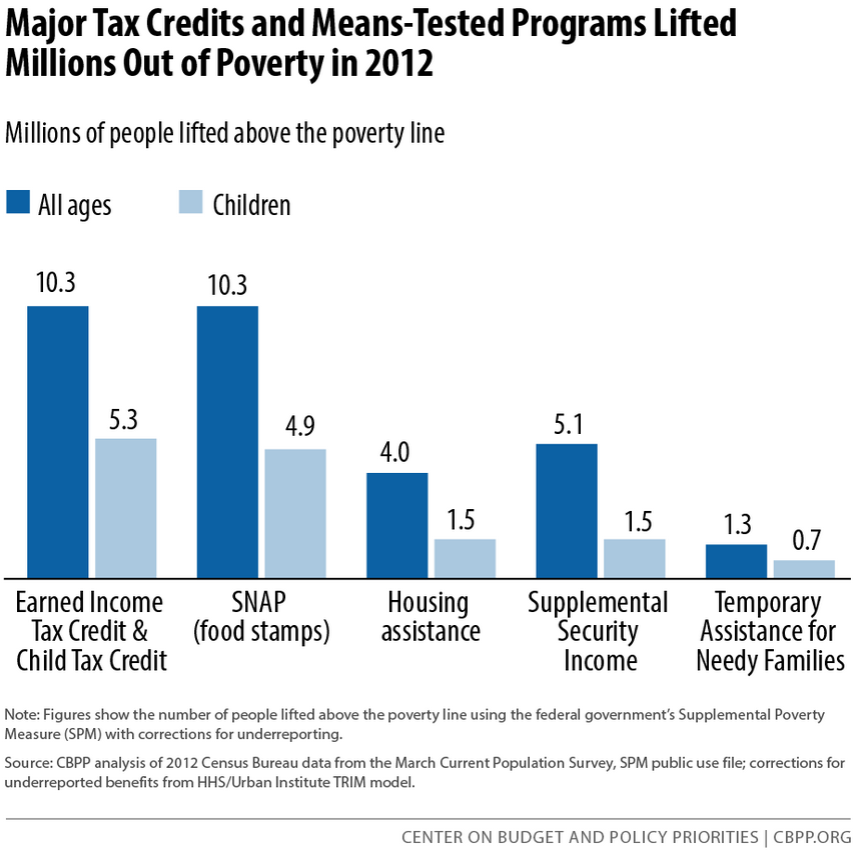The recent riots in Baltimore have been used by some commentators as evidence that the social safety net needs to be overhauled. On Sunday, asked by CBS News’ Bob Schieffer about lessons that can be taken from the rioting in Baltimore, House Ways and Means Committee Chairman Paul Ryan (R-WI) quickly turned the conversation to an overhaul of the nation’s anti-poverty programs.
“It’s really not a more money thing,” he said. “Spend the money we have more effectively. I think we need to do another round of welfare reform — not to save money, but to save lives. And so it’s not a function of pumping more money into the same failed system because we’ll just get the same failed result. It’s rethinking how we actually attack the root causes of poverty. All we do these days effectively is treat the symptoms of poverty.”
Related: House Democrats Push Back Against GOP Spending Cuts
Ron Haskins of the Brookings Institution, a former White House advisor on welfare issues, estimated in 2011 that the federal government spent an average of $13,000 for every person below the federal poverty line, now $23,000 for a family of four.
A study just released by the Center on Budget and Policy Priorities (CBPP) suggests that this is money well spent. The social safety net isn’t just working, it’s working better than we realized. In 2014, the Supplemental Poverty Measure, which accounts for social assistance programs when determining whether individuals live below the poverty line, showed that when social safety net programs were taken into account, they reduced the number of Americans living in poverty by nearly 50 percent.
Nevertheless, the social safety net – the patchwork of federal programs designed to support low-income Americans – has been a target of Congressional Republicans who on Tuesday passed a budget resolution that would cut hundreds of billions of dollars in spending on programs such as food stamps and other cash assistance programs.
Related: Supply-Side Social Insurance Simply Doesn’t Work
The Washington-based Urban Institute recently released data showing that the supplemental poverty measure actually underreports receipt of various government benefits. According to Arloc Sherman and Danilo Trisi of CBPP, when the corrected figures are used, they reveal a more significant impact.
“The safety net reduced the poverty rate from 29.1 percent to 13.8 percent in 2012 and lifted 48 million people above the poverty line, including 12 million children,” they write. “Correcting for underreporting reveals that the safety net also did more to reduce deep poverty than previously shown, although 11.2 million Americans remained below half the poverty line.”
Social Security is the most effective program when it comes to raising annual incomes above the poverty line. The generations-old program, designed to keep retirees from living in need, kept 27.4 million Americans above the poverty line in 2012.
Related: Senate Republicans Pass Budget Plan, Eye Obamacare Repeal
The Earned Income Tax Credit, a benefit available to low-income workers, and the Supplemental Nutritional Assistance Program, commonly known as food stamps, were the next most effective. Together, they lifted 10.3 million people out of poverty, nearly half of them children. Other programs accounted for the rest.
While it may sound like good news that the social safety net works better than we thought it did, Sherman and Trisi close on a down note. “Nonetheless,” they write, “42.8 million people remained below the [supplemental poverty measure] poverty line in 2012 even after the corrections, including 11.2 million people living below half the poverty line.”
Top Reads from The Fiscal Times:





